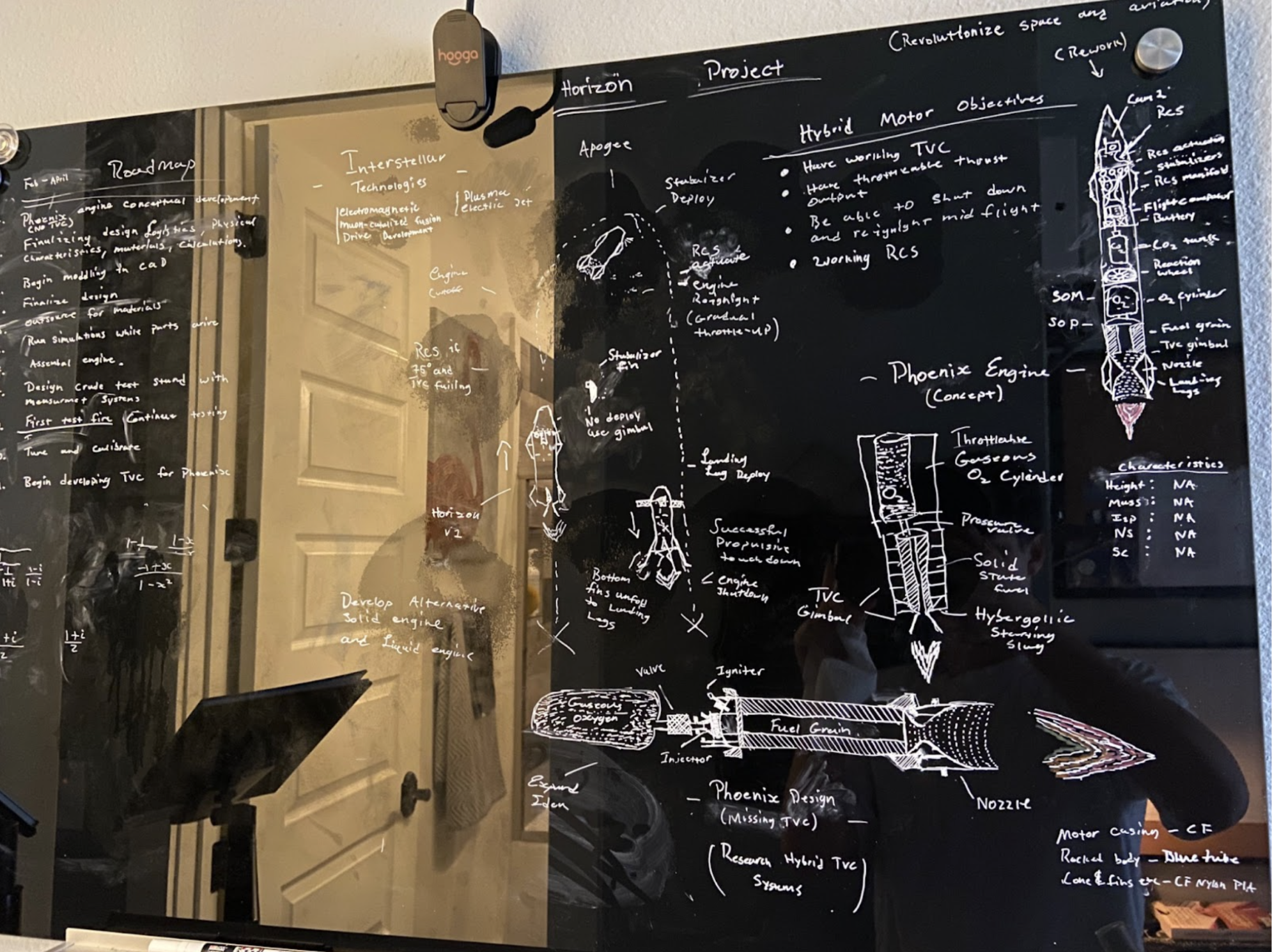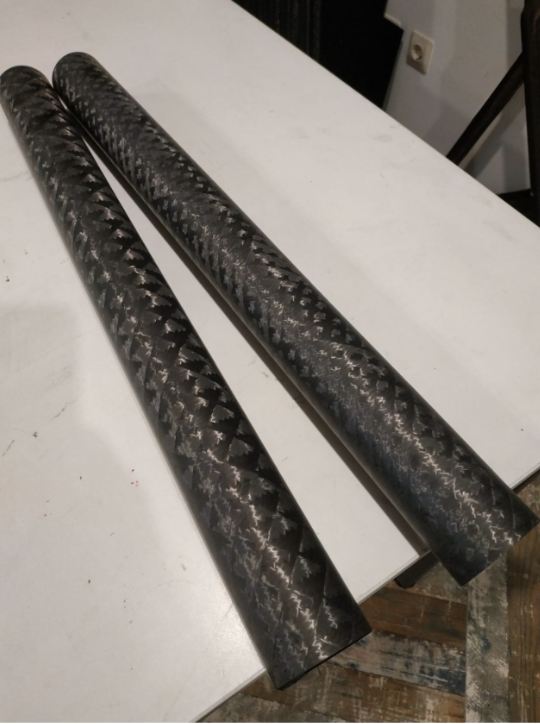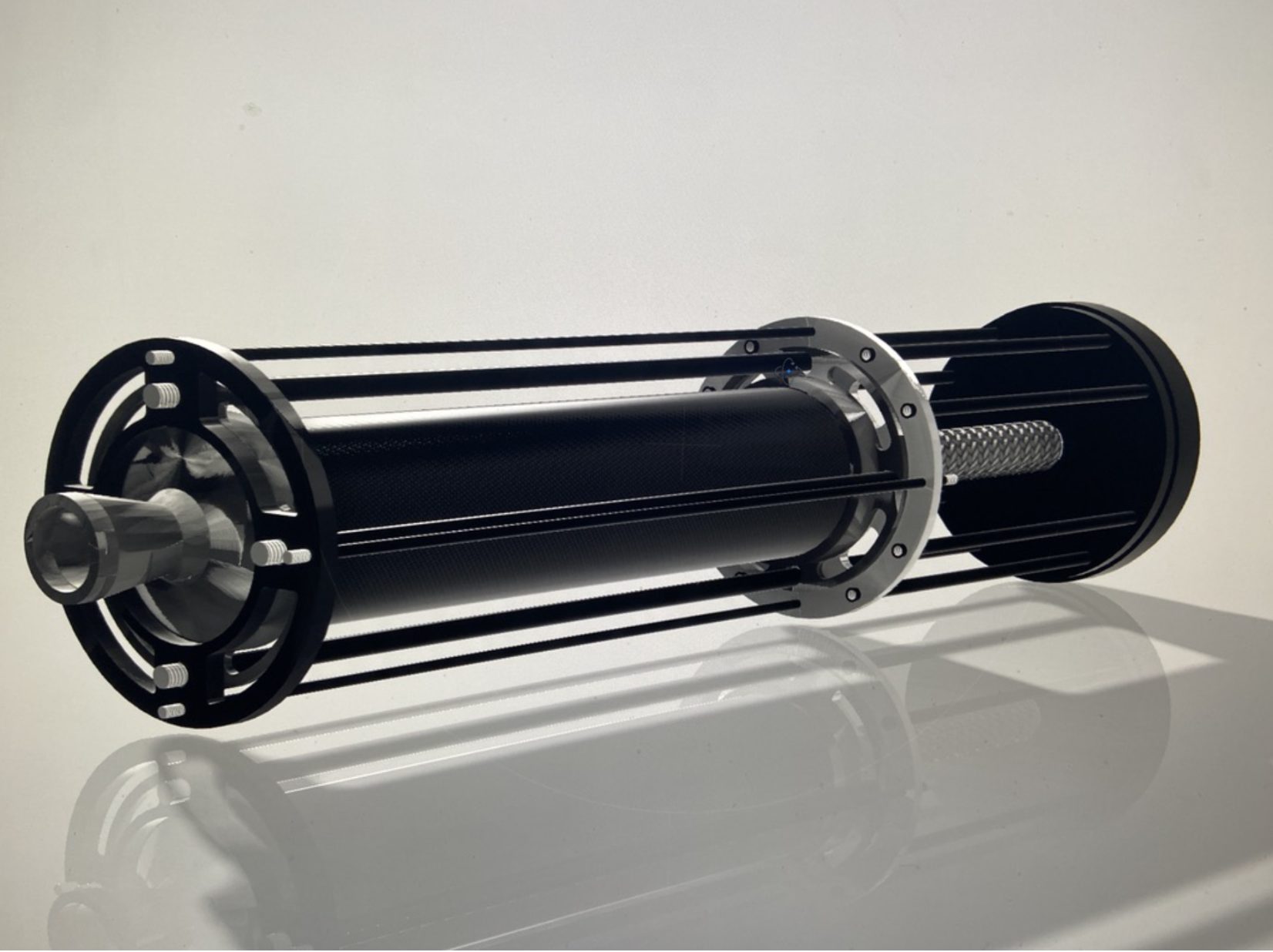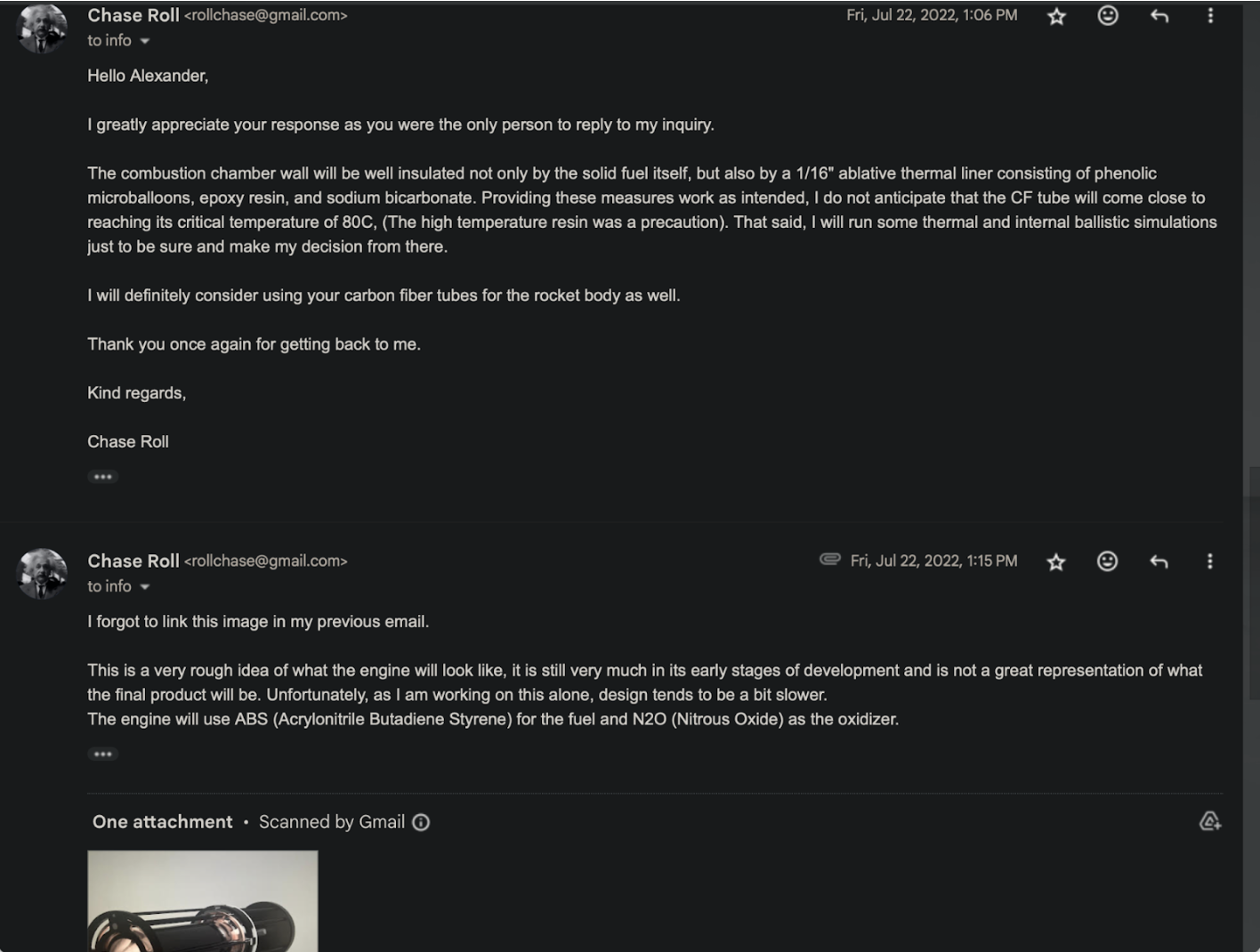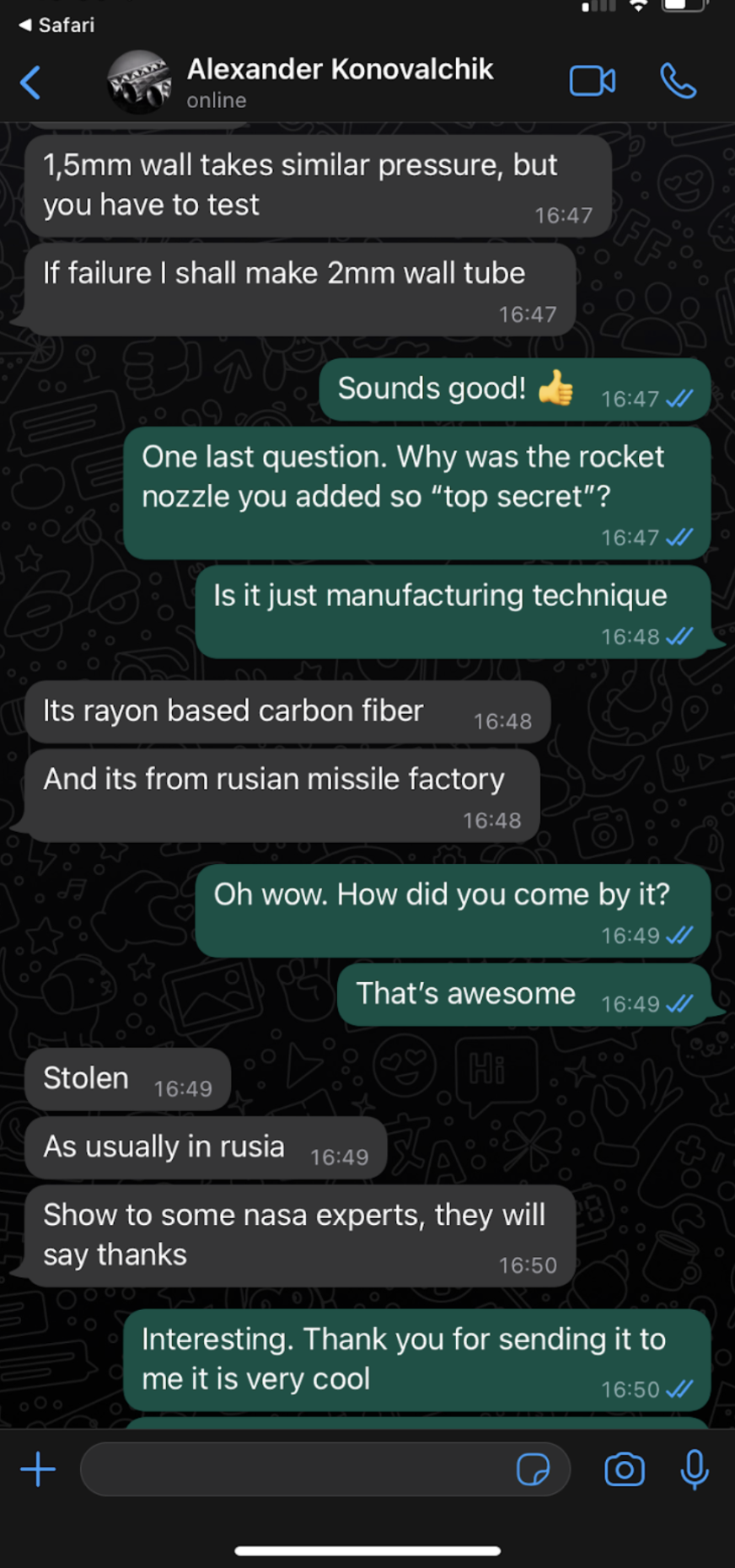Hybrid Rocket Engine
A hands-on approach to aerospace engineering, pushing the boundaries of small-scale rocketry.
How It All Started
At 16, armed with curiosity, a few textbooks, and caffeine fueled confidence, I set out to build a functional hybrid rocket engine. Inspired by friends engaged in similar projects, I dove into Rocket Propulsion Elements, sketched early concepts, and calculated optimal dimensions. From there, I moved on to designing, modeling, and simulating in Fusion 360, as well as running internal ballistics analyses in OpenMotor.
The Vision
The goal was to develop a compact hybrid rocket engine capable of variable thrust and precise vectoring—essentially, a system that could adjust its power output and flight path in real time. The design utilizes 3D-printable ABS plastic as fuel and liquid nitrous oxide as an oxidizer, with an estimated thrust of 1100 N sustained for approximately seven seconds.
The engine features a 45-degree woven, high-temperature matrix carbon fiber external wall, reinforced with a stainless steel insert and a custom ablative phenolic microballoon internal lining to protect the very expensive carbon fiber from stress and thermal wear.
The nozzle? Originally planned to be CNC-machined from titanium—but that’s still up for debate.
Variable Thrust and Vectoring
Thrust vectoring is the process of manipulating the direction of an engine's thrust to steer a rocket's flight path, while variable thrust refers to the adjustment of the engine's power output to control the speed and altitude.
Cold Emails & Awkward Conversations
At 16, I had little in the way of resources, so I took a shot and reached out to various companies seeking support. Most responses were what you’d expect—a flat-out decline—but a few, specifically M-Carbo in Belarus, were surprisingly receptive. After reviewing my project and design specifications, they generously sent me multiple carbon fiber tubes free of charge, along with some hard-to-find rayon-based carbon fiber as a bonus.
Then came the issue of sourcing liquid nitrous oxide as a teenager, which led to some… interesting interactions. Let’s just say a few local dentists and motor shops had questions.
Challenges & Considerations
Handling high-pressure, volatile systems presents significant risks. As I progressed, I realized that I needed a stronger engineering and analytical foundation to ensure both safety and performance. This led me to pause full-scale testing and assembly until I acquired the necessary expertise.
Whats Next?
I plan to resume the project once I have developed deeper technical and analytical skills in propulsion system design and engineering. In the meantime, I’m expanding my knowledge in fluid dynamics, combustion physics, and material science to ensure that when I revisit Phoenix, it will be rebuilt and reimagined with far more precision and confidence.
